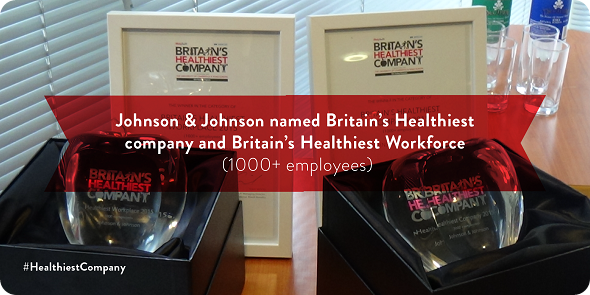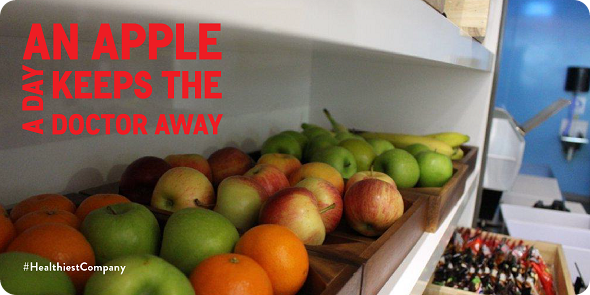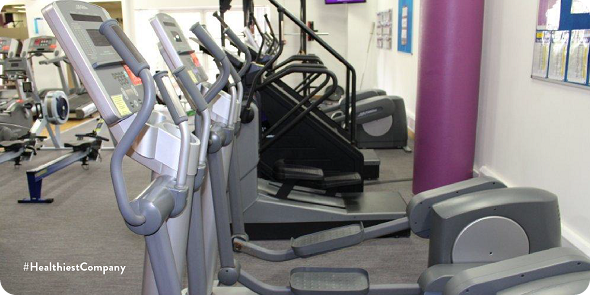In the UK, our health and wellbeing strategy has really taken off in the past 10-15 years. It’s holistic in approach, incorporating a range of initiatives, from creating a vibrant working environment to providing our people with choice around benefit provision.
Our health and wellbeing strategy operates at a global, regional and local, country level. Our local wellbeing initiatives are designed to meet employee’s specific needs, which we assess using health service usage data and feedback from employees.
We have formal HR policies and benefits, and an informal, personalized approach that acknowledges that different requests for flexible solutions that come at different life stages.
One example is our maternity policy. Aside from traditional maternity leave, we also offer a flexible transition back to work, which we find really helps new mums and supports them with some of the emotional aspects of returning to work. We also have flexible working policies such as part-time working and job sharing. Around 90 per cent of women return to work at J&J after maternity leave.
What are the most important factors to consider when caring for the health of employees?
We believe that a healthier workforce means less pressure on the NHS, a more vibrant society and a stronger economy. At an individual level, it also means fewer people battling with physical or mental health complaints, because they are nurtured and well looked after.

We are dedicated to encouraging new ways of working that are geared towards increasing our employees sense of wellbeing, their energy levels, their health and their enjoyment of their home and work life. For example, we have given all of our people a copy of our Little Book of Health & Wellness which is full of tips on how to improve wellbeing.
Can you tell us more about J&J’s company-wide health and wellbeing strategy?
Over the last few years we’ve extended, expanded and enhanced our Health & Wellness programme and now focus on four key areas - monitor, educate, environment and maintain. These pillars form the basis of our Little Book of Health & Wellness.

For example we focus on providing access to solutions that enable employees to monitor their own health and receive specialist advice. We educate our employees to understand how their choices and behaviour affect their performance and purpose, at work and at home. Our ethos is to create an environment of good work and one that connects them with a culture of health programmes that enable a shared responsibility. We encourage our people to maintain the focus on a healthy lifestyle to keep on the right track.
Research has suggested that sitting down for long periods of time may be bad for our health. Does J&J do anything to help employees combat this?
We offer ergonomic workstation assessments to help ensure employees are correctly positioned at their desks, minimising the risk of repetitive strain injury and injuries caused by poor posture.

We also have on-site physiotherapy services that means minor problems can be diagnosed and treated before they escalate into issues that can mean someone is signed off sick for weeks.
How does J&J help employees to manage their work-life balance?
We recognize that a work-life balance is a key aspect in an employee’s overall health and well-being.
Access to our health programs is open to all employees but we also seek to ensure that people achieve a balance in their home and work lives through a range of non-health HR policies and practices.
For example, we purposely offer only a limited carry-over of holidays to encourage people to use their entitlement. We also provide an option for our people to buy up to five extra days holiday a year through the flexible benefits scheme.
Does J&J offer any specific support to help employees deal with stress?
When it comes to mental health, minimizing work stress by having an environment in which stress can be managed, and issues such as anxiety freely discussed with management is crucial. For example, we offer massage therapists as part of our stress management programme.
In addition, our ‘Energy for Performance in Life’ program helps employees attend to their spiritual, mental emotional and physical needs. If any of these dimensions if out of line then it can increase stress levels, reduce energy and affect their ability to perform well. That’s something we obviously want to avoid for the well-being of our employees.
In what ways do you hope to improve the health of J&J employees moving forwards?
We are always looking at what more we can do to support the health and well-being of our employees. We will look at the results of our latest employee engagement survey as well as this helpful data from the Britain’s Healthiest Company team and will tweak our existing programme if employee feedback suggests this is needed to keep them effective and fresh.
Where can readers find more information?
About Clare Sicklen
Clare Sicklen is the Human Resources Director, Northern Europe for the Consumer division of Johnson & Johnson Ltd. She has worked for Johnson and Johnson for the last 16 years in a number of generalist Human Resource positions and has been a member of the Management Board for the last 14 years.
During her career Clare has developed a depth of experience and interest in Organisation Design, Change Management, Talent Development and Health and Wellness.
Clare holds a Degree and Master’s Degree in Psychology from the University of Surrey. She currently resides in London, with her partner and two children.